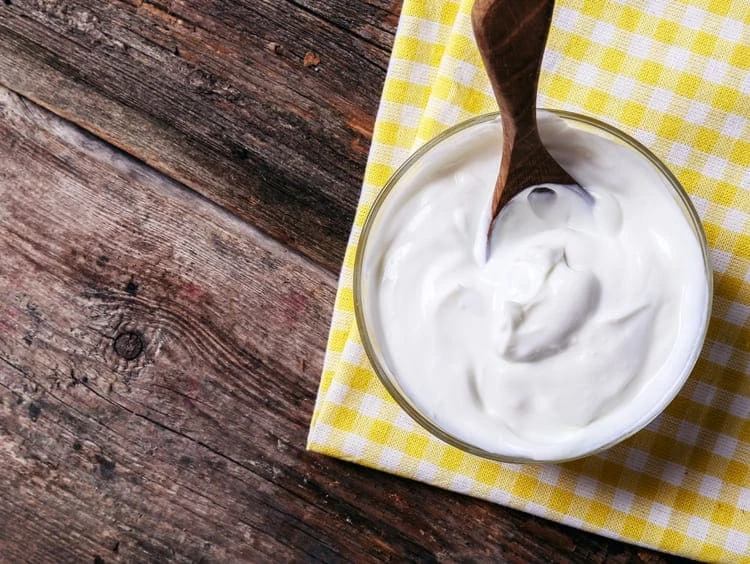Our body has millions of microorganisms known as bacteria. It lives in our bodies and thrives on our food intake, also known as gut microbiomes. It is good for our health and helps in the digestion process by breaking down the food we eat and converting it into glucose, protein, carbohydrate, etc.
Gut health is so vital that scientists often refer to it as the body\'s second brain. For good bacteria to thrive and the bad bacteria to dissolve in our body, we need to feed ourselves with foods that good gut bacteria love - probiotics are something that microbes thrive upon.
Not many regular food ingredients have the kind of probiotic carbohydrates that is required for good gut health. Therefore, nutritionists have often recommended a Specific Carbohydrate Diet or SCD in the form of Yogurt for good microbiome formation and overall good health. Regular intake of SCD yogurt in prescribed proportions and methods helps develop good gut health and the digestive system.
What is a Yogurt Starter?
Yogurt, also known as curd, is produced from milk. The milk is fermented or cultured by introducing an element of a blend of bacteria. This blend is very carefully balanced, and it is known as a yogurt starter.
A starter blend when introduced to the milk will start reacting by consuming the lactose in the milk. When the bacteria consume the lactose, they are converted to lactic acids, thereby changing the structure of the proteins present in the milk.
It results in a tangy taste and a thick and creamy texture. The entire process of preparing a yogurt by introducing a starter is known as fermentation or culture.
5 Facts About Yogurt Starter:
Here, we will discuss the five facts about yogurt starters that you need to know.
1.The main ingredient in yogurt is milk. Preferably, animal milk, but yogurts can also be produced from soy milk and other natural non-animal milk. Vegans who abstain from dairy products can consume SCD yogurt from non-animal milk too. Likewise, a starter culture too can be from either animal or non-animal milk.
2. Streptococcus thermophilus and Lactobacillus bulgaricus are a type of bacteria. They are the best type of starter cultures generally found. They can be from either animal or non-animal milk.
3. The function of the starter is to consume (ferment) the lactose (a form of glucose or sugar) inside the milk. Their consumption will result in the formation of lactic acids. As the quantity of lactic acids starts increasing, the pH levels drop in the milk. This results in milk clotting and as a result, the fats (carbohydrates) inside the milk get condensed and begin to thicken.
4. Before introducing the starter culture to the milk, it can be made suitable by various methods and techniques or blends to get the desired type of yogurt. For example, a high-fat yogurt needs high-fat milk, whereas skimmed milk will produce a low-fat yogurt. Similarly, condensed milk may be added to the milk before inoculating the starter to make the yogurt thicker.
5. Yogurt starter cultures generally are not flavored. They are a carefully blended set of bacteria. Any flavor of yogurt is added when the milk is well fermented, and the yogurt is almost formed. There are also processes where certain natural flavors are added to the milk before fermentation. The proportion of milk to be cultured and the starter blend will affect how the yogurt turns out in its thickness, creaminess, and taste - whether its tanginess is too sour or a bit sweet.
Benefits of a Yogurt Starter
Traditional animal milk yogurt blends make natural yogurts the best. In the case of non-animal milk yogurts, the starter culture doesn’t have enough sugar or lactose to feed. It helps if a little bit of sugar is added to the milk to ensure the consistency of fermentation and a uniform thickness of the yogurt.
Though the basic principles of the fermentation and preparation process for yogurt cultures are uniform, they may vary depending on the type of yogurt you may want to derive. Therefore, it is essential to follow each step mentioned in the starter culture’s list of instructions for preparation.
- Making yogurts at home is much better than buying them from a store.
- Yogurt is a super-food and is made in many different ways based on its ingredients and requirements. When you make yogurts at home using a starter culture, you can explore and prepare the different types of yogurts for yourself.
- A single yogurt culture can yield a variety of yogurts based on the milk type and the fats in the milk. You can use a yogurt culture blend on various kinds of milk to produce the desired yogurts, be it thick and creamy or light and with low fat.
Wrap-Up
Yogurts are a definite choice for your microbiome health. And, yogurt starters can help you prepare a yogurt of your choice at home. Not only do you make a natural yogurt, but you ensure safety when you know that the fermented milk and everything that goes into preparing the yogurts is natural and healthy. Therefore, start making your yogurts at home.



